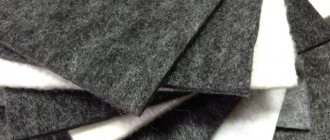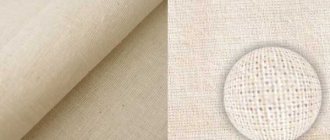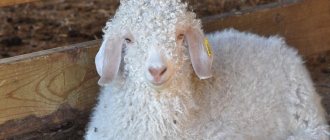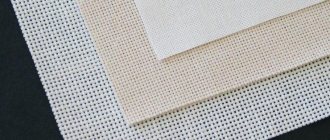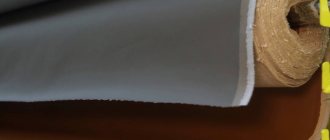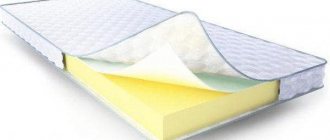Origin story
The first study of the processing of thermoplastic into insulation fibers began in 1935. This was in Great Britain, and in the Soviet Union, synthetic winterizer was created in 1949. Then it was called lavsan from the abbreviation of the name of the Laboratory of Macromolecular Compounds of the Academy of Sciences.
Then the technology continued to advance around the world and be improved by scientists from different countries. In 1960, Japan invented bonding fibers using the temperature method. This is an improvement that made it possible to create large padding polyester fabrics, where the fibers adhere better to each other.
Thanks to the Italians, the material became widespread; clothing, stuffing for toys, and bedding began to be made from it. It is impossible to imagine a world without this light, but warm and dense material, it surrounds us.
What is it made from, composition
The name “sintepon” is formed by merging the words “synthetic fabric”. It is made from a material belonging to the category of plastic - polyester, and specifically from polyethylene terephthalate. Chemical origin classifies the material as synthetic. But despite this, the polyester composition is safe for humans.
Interesting fact: making padding polyester has a positive effect on the environment. There are 2 types of raw materials that can be used to produce filler - primary and secondary. Primary is pure plastic that has not yet been used, but secondary raw materials are bottles, disposable tableware and other PET waste that litter our planet. The production of padding polyester allows them to be given a second life and used again for the benefit of people.
Filling made from recycled materials is not used for the production of clothing or pillows, because at the moment technology does not make it safe for humans. Perhaps over time this will become possible, but for now it is used only in the technical field.
Production
Synthetic insulation, what it is, from an industrial point of view, let's figure it out.
The production cycle begins with the production of fiber. Already at this stage, you can save material resources and reduce energy costs. A good structure is made from high-quality raw materials, but you can use secondary products: plastic bottles, packaging, bags, disposable tableware. The starting material is heated and forced under pressure through microscopic holes. As it cools, a thin thread forms. In nature, a spider weaves a web in a similar way.
Now we need to form the fabric. There are 3 ways:
- needle-punched;
- adhesive;
- thermal.
The first is to combine multidirectional fibers into one fabric by stitching.
This is how the predecessor of padding polyester is made - batting. The material holds its shape steadily and does not fall off. The method is quite labor-intensive and expensive, but at the same time it allows you to achieve the best characteristics. Glue method. The threads are glued together. The process is easy to set up and material costs are low. The material turns out airy and homogeneous, but holds its shape much worse and does not withstand washing.
Synthetic fibers can also be joined by simple heating. Bonding occurs due to partial melting. As the fabric cools, it acquires clear outlines. The material obtained using this technology has excellent characteristics, does not fall off and keeps its shape.
For production you will need polyester fiber and a set of special equipment:
- Loading compartment. Raw materials are loaded into a large storage hopper.
- Carding apparatus. Allows you to fluff and mix the material.
- Pinching and oiling device. Prepares for the baking process.
- Bake. Here the bonding and shaping of the web occurs at elevated temperatures.
- Winding unit. It is necessary for winding products into rolls for ease of transportation and further use.
In practice, all this is combined into one complex.
Characteristics by properties
The synthetic winterizer has a width from one and a half to 2.35 meters and a thickness depending on its purpose. When sewing a thin bedspread, only 0.5-1 cm can be used, but for furniture seats the thickness can be 5 cm or more.
Expert opinion
Alyona
Fabric expert and technologist Alena Khlebnikova is ready to answer your questions.
Write to us
Manufacturers also call this material polyester. For example, the label of a jacket with padding polyester insulation may say “polyester.” These are not the same concepts; polyester is a group of materials that are made from polyester, but padding polyester is only one of them.
The padding polyester looks like white fibers intertwined with each other. It can be described in a few words - it is a voluminous fluffy cloud that can be easily squeezed in your hands. Available in white, but can be grayish or yellowish.
Types of synthetic insulation
There are the following types of materials, united under the single concept of “sintepon”, but they have independent definitions:
- Sherstepon is a material based on sheep wool. Its presence in the structure is environmentally friendly and has the ability to better retain heat. Most often, sherstepon is used to make blankets.
Sherstepon is a new generation of non-woven domestic insulation made from a mixture of natural wool and polyester fibers - Synthetic fluff consists entirely of artificial polyester fibers and is obtained by combing. This type of material is very soft, elastic and warm. It is also called an analogue of natural fluff. Synthetic fluff is hypoallergenic due to the absence of glue.
Synthetic fluff, which is produced using the latest technology, contains many of the finest polyester fibers - Hollofiber is a material made of hollow fibers, the production of which uses a thermal bonding method. It is practical and able to stay dry in wet conditions.
Holofiber is also suitable for making outerwear - Sinteplast is a voluminous and elastic material with a large amount of silicone. The fabric is used as a lining for upholstered furniture, as well as when sewing blankets.
Synthetic plastic is used in the production of mattresses and upholstered furniture: it is used to form the curves of sofas and armchairs
Pros and cons as insulation
Among the positive properties of synthetic winterizer:
- Soft and voluminous. Furniture seats are made from padding polyester, which are very comfortable and soft to sit on. It is also actively used to fill soft toys.
- Easy. Even a double blanket filled with padding polyester will not press on top (like, for example, an old cotton blanket). A coat insulated with padding polyester is much lighter than a down jacket.
- Elastic, recovers quickly. After the fibers are compressed, they immediately return to their original state.
- Thermal insulation. You won't feel cold in clothes lined with padding polyester.
- Hypoallergenic. Despite its artificial origin, allergy sufferers do not complain about this material. As well as warm children's clothing and toys are filled with padding polyester.
- Long lasting. Even after several years of use, it does not wrinkle. Of course, subject to the conditions of use and care.
Unfortunately, this fiber is not without its disadvantages:
- Sintepon is not intended for harsh winters. At temperatures below -10 degrees it can be cold.
- Despite the porous structure, it does not allow much air to pass through. This may cause a person to sweat.
- An allergy may occur if low-quality glue was used during production (when manufactured using the glue method).
Manufacturing technologies
- Sintepon is made from thin threads in several ways. The most common and modern method, which is very popular, is heat treatment of fibers. The threads are slightly melted and fastened together. This material is called Eurosintepon. It is soft and elastic to the touch, retains its shape well and is less electrified. Eurosintepon is used in the manufacture of pillows and blankets, as well as for insulating outerwear. The color is white, the fibers are slightly transparent.
- The second most common method for making padding polyester is based on the fact that the fibers are held together using a special glue. The resulting material is the cheapest among others. It quickly falls off, becomes deformed and becomes highly electrified, but feels more delicate and airy to the touch than Euro synthetic winterizer. This type of material is used in the manufacture of decorative pillows and children's toys. The color is white, there may be subtle grayish tints.
- And the last method is to connect the threads using needles that have miniature notches. Bonding is carried out using special equipment. The resulting material is of higher quality than Euro synthetic winterizer. It is more resistant to mechanical stress and lasts longer. It is used in the production of clothing, bedding and furniture decorative items. The color is white, and when crumpled, it quickly returns to shape. To the touch, such padding polyester is soft, smooth and elastic, has a porous but uniform structure.
Difference from holofiber
In another way, holofiber is also called siliconized padding polyester, but this is a slightly different material, although it is also used as a filler.
A characteristic feature of difference is shine. If you take a piece of padding polyester and holofiber in both hands, the second one will be softer and looser, as if in lumps. These fluffy balls are filled with soft toys.
It is also possible to divide padding polyester into layers, since it is produced in sheets. Holofiber is round in shape, and this will not work with it. Therefore, if you are sewing, for example, a quilt, it is better to use padding polyester.
Comparison of fillers, how to distinguish them by touch
As a rule, high-quality synthetic padding has light shades: from white to milky. When you press the fabric with your finger, a small dent will instantly appear, after which the material will immediately return to its original shape. Synthetic winterizer is much lighter than wool insulation.
How to distinguish padding polyester from its holofiber variety
Holofiber is an elastic synthetic insulation. It is hollow inside, so it retains heat well. Holofiber, unlike lower-quality types of padding polyester, retains its original shape after a dozen washes and is able to warm you up in a frosty winter. In addition, it does not cause allergies, compared to synthetic filler. Holofiber has practically no color shades. It is usually light and shiny in color. In the light this material is slightly transparent. Other types of padding polyester are stiffer and looser than holofiber. If the holofiber is wrinkled in your hand, it begins to slide. It, like padding polyester, can stretch almost silently.
Holofiber has good sound insulation. Its use in the construction industry helps create favorable conditions for people, providing maximum acoustic comfort in the classroom.
Sintepon (top) and holofiber (bottom)
How to distinguish padding polyester from fluff
Synthetic winterizer is a synthetic insulation material, while down is a natural insulation material and lasts longer. Synthetic winterizer cannot be considered a durable material. Down is much lighter and warmer than padding polyester. Items made from padding polyester are easy to care for. If the down is of poor quality, then in rainy weather it can roll up and “fall out” down.
Down is a natural insulation material and lasts longer than padding polyester.
To distinguish padding polyester from down, you can do a little checking. Hold a piece of the product between your fingers and rub it. The fluff will quickly disperse, but after shaking it will return to its place. The fibers that make up the padding polyester feel rough, as if they squeak between your fingers. We can come to the conclusion that padding polyester, unlike down, is unable to compress much.
It should be noted that items made from padding polyester have the lowest cost compared to down or holofiber.
How does Thinsulate differ from padding polyester?
This material was invented in the 70s of the last century in the USA; today it is also produced in Germany, China and Taiwan. The name comes from the English words thin - thin and insulation - insulation.
Thinsulate consists of many fibers with a diameter of 2–6 microns, which is 50–70 times thinner than a human hair. The threads are woven together and are additionally subjected to thermal gluing. The material turns out to be very light and airy, since the volume of air in it is greater than the volume of fibers, which provides excellent thermal protection.
Despite the similar characteristics of Thinsulate and Holofiber, they have one significant difference - price. Thinsulate allows you to sew outerwear with a tight-fitting silhouette, but it will be 3–5 times more expensive than a similar product with holofiber.
Thinsulate is inferior to holofiber in terms of efficiency, but superior to it in consumer properties
Kinds
To choose the right material, you need to know what types of padding polyester are available. According to the production method there are 3 varieties:
- Thermal. The fibers bond together when exposed to high temperatures. Polyester can melt when heated, so some of the hairs stick together and form a layer. This type is more wear-resistant because no glue or other substances are used, therefore, the fibers are more tightly bonded to each other.
- Glue. This is the cheapest padding polyester presented. The fibers in it are combined using special adhesive emulsions, usually PVA. It is not dangerous to humans and does not cause allergies or any consequences, but only if the manufacturer has taken care of high-quality raw materials. Unfortunately, to reduce costs, various harmful impurities can be added to the glue. In general, adhesive padding polyester cannot be called high quality, because the glue from the fibers is washed out after some time.
- Needle-punched. The hairs are connected to each other on a special machine with needles that bend the fibers in different directions. Due to this, they are securely fastened to each other, this is the highest quality method of all presented.
Advantages and disadvantages of padding polyester
Sintepon has a number of advantages and disadvantages.
The advantages of the material include:
- flexibility and strength;
- light weight;
- excellent thermal insulation;
- flexibility and strength;
- protection from cold;
- acceptable price.
The following qualities are considered disadvantages:
- when using the adhesive method for production, the material can be hazardous to health, for example, provoke an allergic reaction;
- the fabric will gradually deteriorate due to washing;
- synthetic winterizer has poor breathability. In a jacket or under a blanket with this filling, a person may sweat a lot, which often causes discomfort.
Application of filler
Used as a filler for bedding items - blankets, pillows. This is a universal material that is easier to clean and wash than other fillers, and also retains its fluffiness and volume longer, which is why it is so widespread in production.
And also this insulation, which allows you to sew warm, but at the same time light winter clothes. Thanks to the types of density and width, it can be used in demi-season and warm jackets and coats.
Dense and thick padding polyester is used to make layers for furniture seats. This allows you to reduce the cost of goods, as well as extend the life of sofas, armchairs and mattresses.
Soft padding polyester and holofiber are used by needlewomen to fill soft toys. Holofiber is more suitable for these purposes, because it comes in crumbly balls, but if desired, you can also use synthetic padding. If it is collected in sheets, then it can be divided, fluffed and filled inside the toy.
Types of products made from padding polyester
Sintepon filler is used for different purposes:
- for the production of armchairs, sofas and other upholstered and office furniture;
- as an insulating material for autumn and winter clothes - jackets, vests, overalls, coats;
- in construction it is used to insulate walls and floors (in addition, it has noise insulation properties);
- synthetic winterizer fabric serves as filters for water, aquariums, and some swimming pools;
- they are used to fill soft toys, gift pillows, mattresses, and blankets.
You might be interested in Features of the properties of taslan fabric and its use
Decorative synthetic pillows
Density of padding polyester in jackets by temperature
The density of padding polyester can be in the range of 50-400 g m². Depending on whether you are sewing a warm coat or a vest, you should know what degree and what density it is designed for. All these parameters are specified by GOST standards.
- 50 g m² is a very thin padding polyester that definitely won’t be able to warm you up. It is used rather to compact the material.
- 80 g m² - suitable for +10 C°.
- 100 g m² - for cool temperatures from zero to 5 degrees Celsius.
- 150 g m² - jacket for frost down to -5 C°.
- 200 g m² - winter temperature about -10 C°.
- 300-400 g m² - rarely used, you can stay in them at temperatures down to -20-25 degrees, but not everyone will be comfortable with this, because synthetic winterizer does not retain heat well and is blown by the wind.
Application area
The material is universal in all areas.
Synthetic padding polyester fabric is most widely used in light industry. Every home has pillows, quilts, bedspreads and covers. After machine washing, they keep their shape well, do not shrink or stretch. And when natural ingredients, such as sheep's wool, are added to synthetic fiber, excellent environmentally friendly and heat-resistant blankets are obtained.
It is also used as an insulating material. In private houses, a layer is placed under the roof for air circulation. And they wrap the chimney pipes to prevent condensation from forming on them.
For apartments in multi-storey buildings, synthetic winterizer is used for sound insulation. They cover the floor, walls and front door. It is very important to use it in wooden houses. It is perfect for hard-to-reach places - cracks, openings.
Practical and inexpensive insulation has won its rightful place in the manufacture of clothing. In addition to its main property (retaining heat), its ability to retain shape and elasticity is successfully used by couturiers around the world. Previously, outfits made from natural materials were in fashion: marten, sable, arctic fox, mink, and beaver fur. To keep warm, manufacturers mass-produced fur coats, coats, and hats from animal skins. It was hard and hot to wear them. And when it rained, they got wet and spoiled. With the advent of new fabric, people were able to wear light and warm outerwear.
In any home there are many products using padding polyester. In upholstered furniture it successfully replaces foam rubber because it is more durable and environmentally friendly.
Manufacturers of soft toys have long appreciated the positive qualities of the material: hypoallergenicity, lightness, softness, plasticity, elasticity and uniformity. This material is well suited for the manufacture of large and small elements of any complexity. Children have long appreciated such soft toys.
Also, not a single New Year's holiday is complete without Santa Claus's beard and balls for the Christmas tree. They are also made from padding polyester filler.
The characteristic finely porous structure of the fabric allows you to create different filters. It is necessary to clean the air from dust in internal combustion engines, in ventilation systems, and in air conditioners. This product has been successfully used to purify water and other liquids.
Indispensable for sewing travel equipment, such as jackets, overalls and sleeping bags. Ski and snowboard clothing is produced. Stayer takes first place in the Russian market. In 2021, it received the "Best Sports Product of the Year" award. This company became the official partner of the Russian Freestyle Federation, displacing Columbia.
The sports audience is looking for equipment that is lightweight, functional and affordable. After all, brands promoted by the West are much more expensive than their Russian counterpart. People with average incomes find replacements for them, while gaining in quality.
also produces clothes for everyday use. Young women should dress warmly and comfortably, as they can walk for several hours in the cold with a child. At the same time, things retain and retain heat. A significant advantage of the products is their low price, the absence of harmful chemical elements and wear resistance. All zippers and seams are taped, which means you can't get scratched.
Recommendations for caring for products with padding polyester
If there is a need to wash a synthetic winterizer product, you need to know how to do it correctly so as not to knock off the filling and not spoil the appearance of the item.
- They use not only hand washing, but also automatic washing on a delicate cycle.
- Set the minimum temperature (30 degrees).
- Do not fill the machine drum more than two-thirds full. It will be better if the product fills only half. The fact is that when wet, it will increase its size and weight; the washing machine may simply not withstand such a load and break.
- It is advisable to avoid spinning and drying, so as not to end up with wrinkled fabric and crumpled filler.
- Do not soak the item in advance.
- The detergent must be liquid, suitable for synthetic fabrics. Do not use powder or chlorine-containing substances, as they will damage the structure.
- To wash out the detergent, it is better to include an additional rinse.
- If the product is still wrinkled, you can iron it through a thick flap at the minimum temperature. Steaming is prohibited!
- Spinning is not necessary even with your hands; the water will drain from the jacket or coat itself if you hang it over a basin on a hanger.
Properties that a high-quality item made from padding polyester has
A good item with padding polyester should have the following features:
1. Sufficient lightness, elasticity and volume. 2. Heat-retaining effect. 3. Lack of environment for dust mites, moths and molds to appear in the product. 4. Good recovery abilities. 5. Possibility of using both dry cleaning and washing at home. 6. Hypoallergenicity of this material.
In winter, with proper care, synthetic winterizer can withstand frosts down to -15 degrees Celsius.
But, speaking about the positive qualities of the filler, it is necessary to say about its negative quality, which can occur due to disturbances in the structure of the fibers. This very violation occurs due to frequent washing of products, this, in turn, invariably leads to a deterioration in the appearance of the product, and to the fact that the synthetic winterizer will begin to let in cold air currents.
What to do if the padding polyester goes wrong
Despite all the positive features, it is still a clumping material, which causes inconvenience during use. If the problem occurs after washing, you can wash the item again, but using shady balls. There is no need to add detergent; all other washing recommendations remain the same. Straighten the remaining lumps with your hands.
If it is possible to remove the filler (for example, from a pillow), then it can be combed by hand. To do this, remove the clumps and ruffle them using a pet detangling brush. If you don’t have a brush, you can do this with your hands, “tearing” the fibers to create a fluffy mass. At the end of the procedure, place the filler inside the cover and sew up the hole.
Characteristic
Despite its lightness and airiness, synthetic winterizer retains heat well. Every year the textile market develops and old technologies are replaced by new ones. Previously, it was considered a “low-grade” insulation and filler. However, modern technologies make it possible to correct previous mistakes and improve production. The modern version of this product is much safer and has better performance characteristics.
Advantages:
- Light weight of finished products;
- Softness and airiness;
- Retains heat well;
- Budget;
- Elastic;
- Elastic;
- Restores shape well.
| Density of padding polyester ( g/m² ) | Air temperature ( °C ) |
| 50 | plus15 |
| 80 | plus 10 |
| 100 | plus 5 |
| 150 | minus 5 |
| 200 | minus 10 |
| 300 | up to minus 20 |
| 400 | up to minus 25 |
Flaws:
- If used in outerwear, it will withstand temperatures only up to 10 degrees (with a minus sign);
- Unsafe (if made using the glue method);
- Under the influence of numerous washes, it can lose up to half its thickness;
- When using the adhesive manufacturing method, the bonds between the fibers can quickly weaken.
The filler, of course, is not as ideal as we would like. But why is it still popular today? The answer is simple - low cost.



